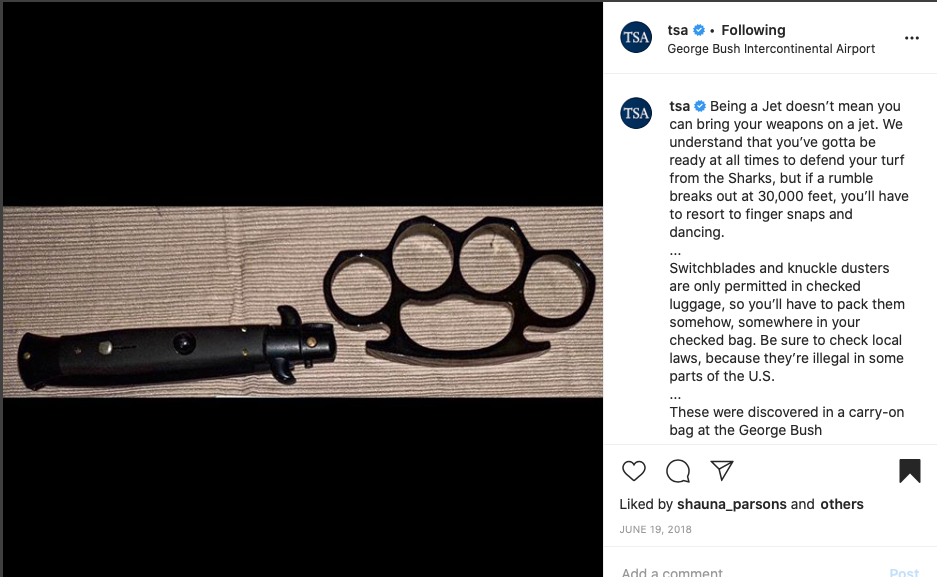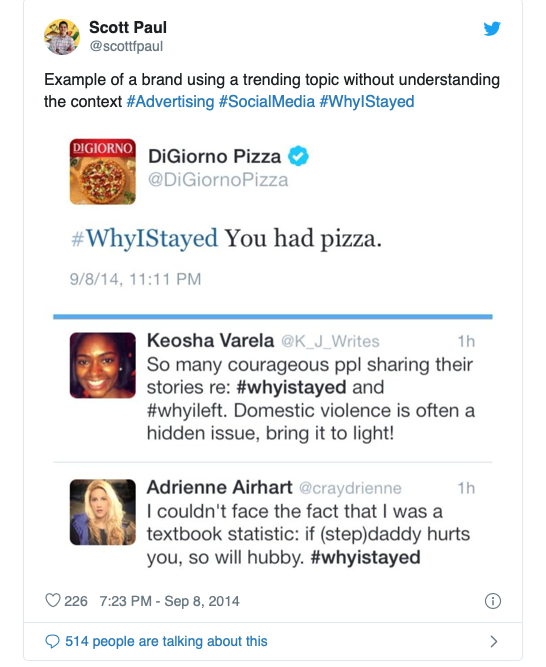For many years, I performed stand-up comedy. Stand up, to me, is one of the most phenomenal art forms. But tough. The only way to get funny is to spend many years not being funny in front of a lot of strangers. To endure the torture of being a terrible comic, you have to really love humor. You have to love it enough to spend every night at an open mic, you have to love it enough to come back after being heckled, and you have to love it enough to be paid in nachos.
When I started stand up, there were no smartphones or social media. Comedy, on a large scale level was filtered through media gatekeepers. We now live in a time of Twitter, Instagram, YouTube, and TikTok, where anyone with an iPhone can be funny. There is some brilliant content out there, and some of the most entertaining content comes from corporate accounts such as Taco Bell, Arby’s, and Casper. Even the TSA is funny:

An engaging social media account is essential for any organization, and a humorous social media account can be powerful. If a funny tweet goes viral, it can be seen by millions of people for a relatively small cost (i.e. nachos). One interesting phenomenon that can happen to brands on social media is that the brand develops a personality. Brands engage with their audience which can result in the humanization of the brand (Barcelos, Dantas, & Sénécal, 2018). The Taco Bell Twitter account is an excellent example of this as their tweets are written in a funny and distinct voice. (Patel, 2019).
Coming from the perspective of a comedian, one of the reasons why corporate tweets can be so funny is because they defy expectations, and defying expectations is the heart of comedy. Theoretically, corporations are supposed to be stiff and businessy–as if the C-suite paid for their MBAs with their ability to have fun. But it doesn’t have to be that way. Take this Tweet from Taco Bell:

This is tongue-in-cheek self-deprecation because nobody expects the best date could possibly be at Taco Bell. If someone took me to Taco Bell for a date, it would not be the #BestDateIn4Words. It would be the #LastDateIn4Words. Many corporations, if they are brave, could do this. This tweet could work any fast food restaurant: McDonald’s, Burger King, Wendy’s, or anywhere you wouldn’t want to take a date if you wanted it to go well. This tweet would not work at the famed LA steakhouse Maestro’s or even, arguably, Red Lobster.
Brands have to take caution using humor. They have to evaluate if it is appropriate for their brand to stray away from a traditional corporate communication style. A casual communications style is suitable for a brand whose products are less serious such as food or liquor (Barcelos, Dantas, Senecal, 2018). In other words, it would not be in good taste for the pharmaceutical company Pfizer twitter account to tweet: “Makin’ it rain with all these Medicare dollars! #BIGPHARMA #SORRYNOTSHKRELI”
One example of a social media post gone awry is DiGiorno’s tone-deaf tweet utilizing the #WhyIStayed hashtag that was created to encourage discussion about domestic violence (Campbell, 2017).

In stand up, if you tell an offensive joke, you might lose the crowd but you can to win them back with your best jokes. The same principle applies to a corporate social media post. If an organization writes something offensive, they have to at minimum, be prepared to lose that customer base. Except you might not get a chance to win them back with follow up tweets. So, tweet wisely.
Elizabeth
References
Barcelos, R., Dantas, D., & Sénécal, S. (2018). Watch your tone: how a brand’s tone of voice on social media influences consumer responses. Journal of Interactive Marketing, 41, 60–80. https://doi.org/10.1016/j.intmar.2017.10.001
Campbell, A. (2017). 9 Brands that should delete their account after that tweet. The Huffington Post. Retrieved on from https://www.huffpost.com/entry/twitter-mistakes-brands_n_58caafa2e4b0ec9d29d95dc5
Patel, D. (2019). 7 brands killing it with humor on Twitter. Retrieved from https://www.entrepreneur.com/article/335485

4 Responses to Is this tweet on?